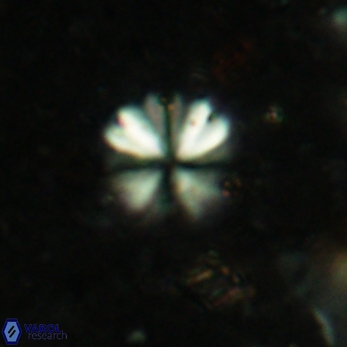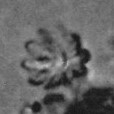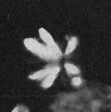Furcatolithus umbrellus
Catinaster umbrellus Bukry, 1971a
Sphenolithus umbrellus (Bukry, 1971) Aubry & Knuttel in Knuttel, 1986
Species of Furcatolithus Martini (1965) have a semi-open umbrella shape birefringent proximal cycle with10-16 distinctly visible segments. The lateral and the apical cycles are vestigial. An excellent SEM micrograph of Furcatolithus umbrellus was provided by Knuttel (1986).
Furcatolithus umbrellus differs from any other species of Furcatolithus Martini (1965) and Sphenolithus Deflandre in Grassé (1952) by having vestigial lateral and apical cycles.
Bukry, D. 1971a. Discoaster evolutionary trends. Micropaleontology 17: 43-52.
Deflandre, G. 1952. Classe des Coccolithophoridés. (Coccolithophoridae. Lohmann, 1902). In: Grassé, P. P. (Ed.), Traité de Zoologie. Masson, Paris. 439-470.
Howe, R., 2021. Ultrastructure and taxonomy of the family Sphenolithaceae. Journal of Nannoplankton Research 39(1), 29-75.
Knuttel, S., 1986. Calcareous nannofossil biostratigraphy of the Central East Pacific Rise, Deep Sea Drilling Project Leg 92: evidence for downslope transport of sediments. Initial Reports of the Deep Sea Drilling Project 92, 255-290.
Martini, E. 1965. Mid-Tertiary calcareous nannoplankton from Pacific deep-sea cores. Colston Papers 17: 393-411.





